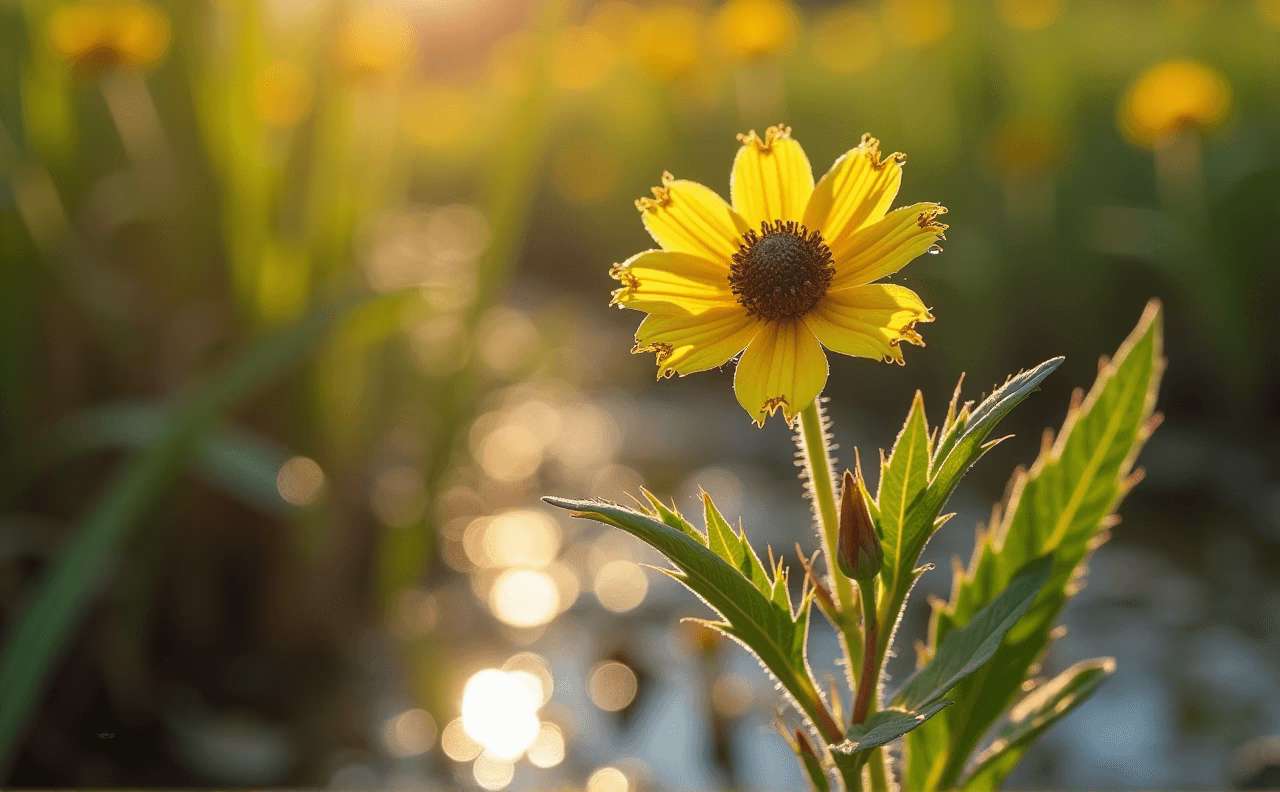
Purple-stemmed Beggarticks
Bidens connata
Grow Time
50-70 days
Sunlight
Full Sun to Partial Shade
Watering
Every 3-5 days
Toxicity
Non-toxic
How to plant Purple-stemmed Beggarticks: Step-by-Step Guide
Growing Guide
Preparation
What you'll need:

Seeds of Purple-stemmed Beggarticks (Bidens connata)

A patch of soil in your garden or a large pot with drainage holes

Regular garden soil (it doesn’t need to be fancy, just well-draining)

Watering can or hose
- A spot that gets partial shade to full sun (at least 4-6 hours of sunlight daily)
When to start:
This plant is pretty hardy and grows naturally in the wild, so it’s not too fussy about timing. However, spring is the best time to sow seeds if you're planting in a garden. If you live in an area with mild winters, you can also start in early fall.
Choosing the right location:
Purple-stemmed Beggarticks like moist soil, so they’re perfect for areas that stay a bit damp, like near a pond or in low spots where water collects. If you don’t have a naturally damp area, no worries — you can still grow them as long as you water regularly!
Tip: If you’re planting in a pot, make sure it’s deep enough to hold moisture but has good drainage to prevent root rot.
Planting
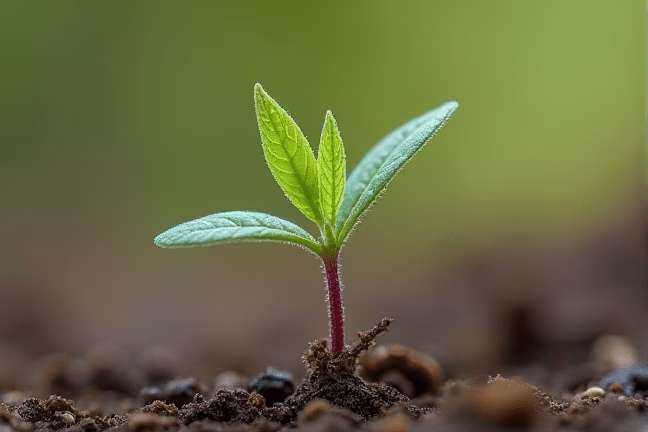
If you're starting from seeds:
- Prepare the soil: Loosen the top layer of soil in your garden bed or pot. You don’t need to add anything special — this plant likes regular dirt.
- Sow the seeds: Scatter the seeds lightly over the soil surface. Don’t bury them too deep — just press them gently into the soil so they make contact but are still exposed to light.
- Water gently: Use a watering can to moisten the soil without washing the seeds away. Keep the soil consistently damp while you wait for them to sprout.
- Wait for germination: Seeds usually sprout within 1-2 weeks. You’ll see little green shoots popping up. Once they’re about 2 inches tall, thin them out so there’s about 6-8 inches between each plant. This gives them room to grow.
If you're transplanting seedlings:
- Dig a small hole in the soil, big enough to fit the root ball of the seedling.
- Gently place the seedling in the hole and cover the roots with soil, pressing down lightly to secure it.
- Water thoroughly after planting.
Tip: These plants spread easily, so give them a bit of space to roam if you’re planting in a garden bed.
Growing Care
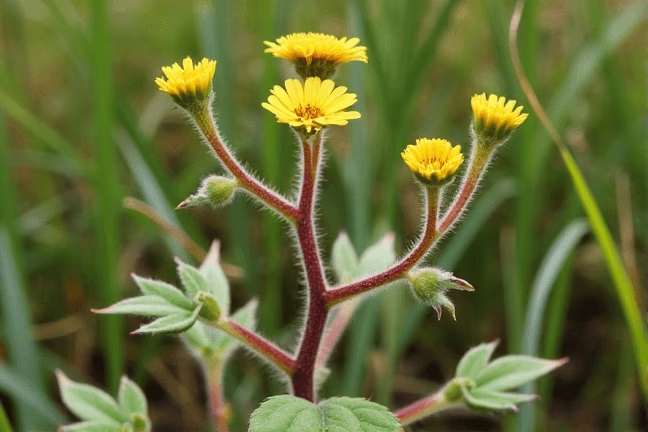
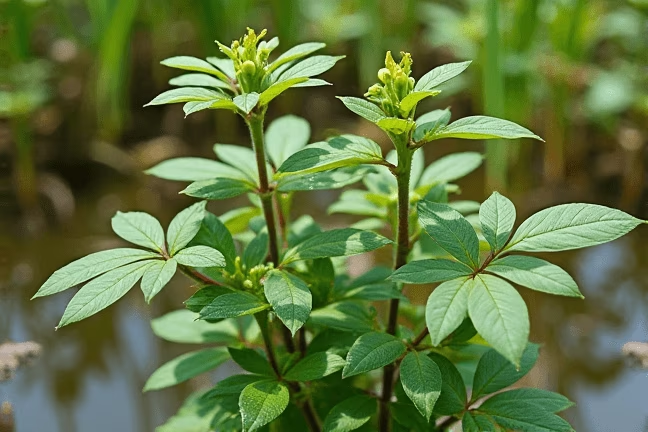

Watering:
Purple-stemmed Beggarticks love moisture! If you live in a dry area, you’ll need to water them regularly to keep the soil damp (but not soggy). If your plant is in a pot, check the soil every day — if the top inch feels dry, it’s time to water.
Sunlight:
These plants do well in both full sun and partial shade. They’re flexible, but they’ll grow faster and bushier with at least 4-6 hours of sunlight daily.
Fertilizing:
You really don’t need to fertilize this plant — it’s used to growing wild and doesn’t require extra nutrients. But if you want to give it a boost, you can use a general-purpose fertilizer once a month during the growing season (spring through early fall).
Pruning:
As the plant grows, it may spread quite a bit. If it starts looking too wild or taking over other plants, feel free to trim it back. Just snip off any overly long stems or leggy parts to keep it tidy.
Tip: If you notice yellow leaves, it might be a sign of overwatering. Let the soil dry out a bit before watering again.
Harvesting
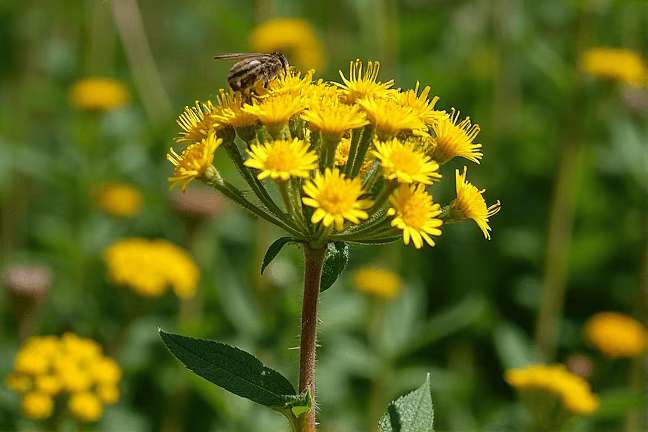
When to harvest:
Purple-stemmed Beggarticks are mainly grown for their foliage and flowers, but if you want to collect seeds, wait until the flower heads turn brown and dry out in late summer or early fall. The seeds are those little barbed bits that stick to clothes or fur — nature’s way of spreading the plant around!
How to harvest:
- Cut the dried flower heads off the plant.
- Shake the seeds loose into a paper bag or envelope.
- Store the seeds in a cool, dry place if you want to plant them next year.
Using the plant:
While not commonly grown for food, some people use the young leaves in salads or as a garnish (though it’s more popular with wildlife than humans). The flowers also attract pollinators like bees and butterflies, so it’s great for adding life to your garden.
Tip: Be careful when handling the seeds — those little hooks can stick to your clothes and pets!
Plant Care FAQ
Q: Is Purple-stemmed Beggarticks invasive?
A: It can spread quickly if left unchecked, especially in moist areas. To control its growth, you can trim it back or remove unwanted seedlings as they pop up.
Q: Can I grow this plant indoors?
A: Technically yes, but it’s better suited for outdoor spaces since it spreads easily and prefers natural sunlight. Indoors, it might get leggy and not thrive as well.
Q: Why are my leaves turning yellow?
A: Yellowing leaves could mean overwatering or poor drainage. Make sure the soil isn’t staying too soggy. Let it dry out a bit between waterings.
Q: Do animals eat this plant?
A: Yes! Birds, butterflies, and even some mammals love this plant. The seeds are a favorite snack for birds, and the flowers attract pollinators.
Q: How do I stop it from spreading too much?
A: Deadhead (cut off) the flower heads before they go to seed. This will prevent the seeds from spreading around your garden.
Pro Tips
1. Companion Planting
Pair Purple-stemmed Beggarticks with plants that love moisture, like mint or ferns. It’ll help create a lush, wildlife-friendly corner in your garden.2. Wildlife Garden
This plant is fantastic for attracting pollinators and birds. If you’re trying to create a wildlife-friendly garden, this is a great addition.3. Natural Spread Control
If you want to contain its spread, plant it in a large pot or container instead of directly in the ground. This keeps it from taking over other areas.4. DIY Seed Collection
Collect the seeds in the fall and share them with friends or scatter them in different parts of your garden for more greenery next year.5. Low-Maintenance Beauty
This plant doesn’t need much fuss — perfect for beginner gardeners or those who prefer low-maintenance plants.6. Damp Spot Solution
If you have a soggy area in your yard that other plants struggle with, Purple-stemmed Beggarticks will thrive there and help soak up excess moisture.7. Seasonal Color
The purple stems and bright yellow flowers add a pop of color to your garden, especially in late summer and early fall when other plants may be fading.